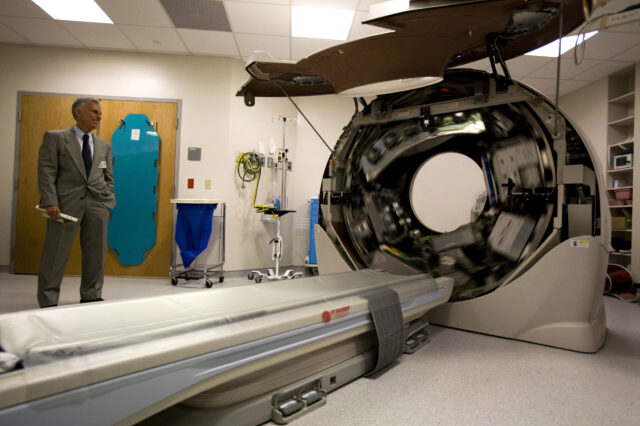Aquilion ONE. Located at Shands at UF medical center

With the hood up and the motor revving at top speed, Dr. Anthony Mancuso, chair of the radiology department at the UF College of Medicine, displays the Southeast's first 320-detector row CT scanner, called the Aquilion ONE. Located at Shands at UF medical center, the machine uses conventional x-rays in a state-of-the-art way, producing an image of an entire organ in a single rotation. The patient sees no movement and is only aware of a tolerable humming sound, but the machine actually spins at about three revolutions per second, fast enough to produce g-force equal to about 30 times Earth's gravity. The detector system is so wide and rotates so fast that it is able to collect the information over a targeted area, quite literally, in a heartbeat, Mancuso said. Other CT systems require gradual repositioning of patients and produce multiple images, which are stitched together to make a 3-D picture. Not only is the new technology faster and able to provide better images using smaller amounts of radiation, it adds the dimension of time to the images, making it possible to show blood flowing through the brain or a series of heartbeats. The $2.5-million diagnostic tool has the potential to detect stroke and heart disease in a matter of minutes and replace dozens of other tests, which can take hours and days. Although the technology is expensive, doctors say the Aquilion ONE may actually reduce the cost of health care because it can help provide a more accurate diagnosis in minutes. In many cases it will replace several tests with one exam. (Photo by Sarah Kiewel//University of Florida)